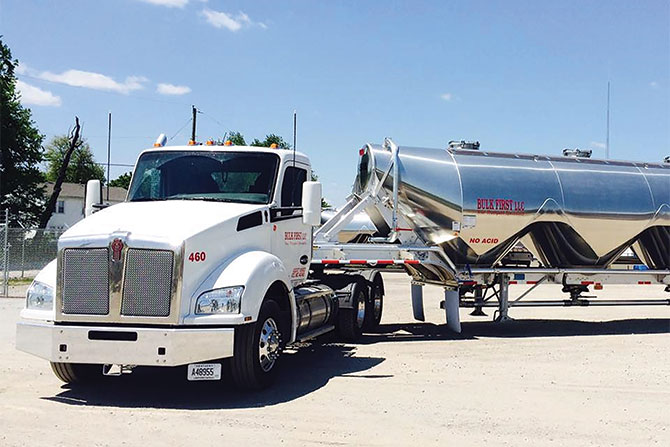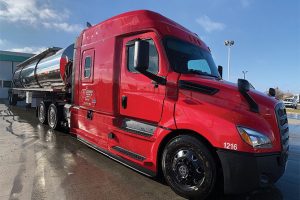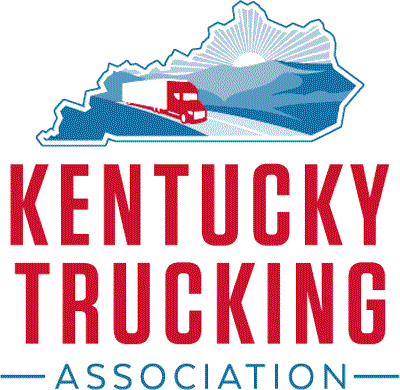By Dewell Gossett, Kentucky Trucking Association
Driver shortages are nothing new, but the last two years have been challenging for trucking companies. A manufacturing slump in 2019 caused hundreds of trucking companies to go bankrupt, and more jobs were lost during the shutdown recession. The cost of liability insurance has pushed fleets out of business, too. Many drivers retired; others went to jobs that allowed them to stay close (or closer) to home, like construction.
Another factor that has decreased the number of available drivers was the Drug and Alcohol Clearinghouse that began screening drivers in January 2020. By August 2020, the clearinghouse identified 26,433 drivers who tested positive for drug use. There’s a return to duty process drivers could start, but 21,053 (79.6%) chose against it.
The shutdown recession that started in March 2020 gave the trucking industry a short-term reprieve even though it also forced drivers to leave the industry. Driver shortages evaporated as manufacturing decreased. According to ATA, turnover between January 2020 and June 2020 went down to the lowest numbers in years: 82% for large carriers and 60% for small carriers. But the trend had reversed by the end of June. Although training schools are open again, social distancing means limited seating capacity. Graduation numbers are down 30-40%.
Trucking costs have increased as people have shopped online or started buying at stores again. Online sales alone were 163% higher than they were in 2019. According to Brent Hutto, chief relationship officer for Truckstop.com, it’s a case of high demand and shrinking supply. The result? Incredible market pressure. (By the way, trucking and logistics companies outperformed the S&P 500 last year. On Aug. 27, 2020, Wolfe Research said trucking and logistics companies were up 21.2% from the previous year, whereas the S&P 500 was up only 8.6%.)
The situation won’t change anytime soon. Trucking is more expensive than it used to be, but planes are even more expensive, and trains are too slow, so 71% of all freight is still being moved by truck.
Many people claim the real problem is recruitment and retention. Others blame deregulation for wages that don’t keep up with the cost of living. Still, no matter what the reason is, nobody will beat down your door for a low-paying job, especially when paired with minimal benefits and long hours away from home under challenging work conditions.
It is essential to pay drivers more money. Where are you going to get the money? Retailers are willing to pay 30% more this year than a year ago because they want goods moved, especially goods such as toilet paper. (At some point, they are likely to pass those costs on to their customers. That’s what has happened in the past under similar circumstances. Remember when the price for an Amazon Prime membership increased by $20? Amazon blamed transportation costs.) Shipping rates are highest for goods where the transportation costs haven’t been prearranged for the long term. Some 20-30% of everything shipped falls into this category.
There is a connection between being a successful company and being a good employer. Like it or not, you need drivers as much as they need you. Please do everything you can to be a good employer by valuing your drivers and treating them fairly. If you wouldn’t want to be paid the way you pay them, then change how you pay them. Compensate drivers for the time they work and the skills they have. If you would hate swapping jobs with them, make their jobs better. That’s what many good, successful trucking companies do, including association members right here in Kentucky. Follow their example, and you will probably see bigger profits, lower turnover and shorter hiring times.
There is a connection between being a successful company and being a good employer. Like it or not, you need drivers as much as they need you.
What else can employers do to find, recruit and retain drivers so that goods can be efficiently moved?
Increase the number of potential employees. Look for veterans, minorities, and women. Why women? The U.S. has more women (51.1%) than men. Including women in your search means doubling the pool of available employees. Making the job something a woman would like working means men will enjoy it more, too. You win both ways.
Screen employees with a predictive job behaviors assessment tool. Hire drivers whose scores are in the top 50%. Ben Schill, vice president of a Wisconsin company called Paper Transport, Inc., says the company has been doing just that since 2018. A little more than half the fleet of 850 trucks, or 52%, has taken an assessment. Turnover was 72% in 2018 and almost 50% in 2019. By hiring people who are a good fit for the job and who care about the company, Paper Transport was also able to increase efficiency and improve safety.
Invest in a route planning program and operations specialists to work with drivers. An Atlanta-based company called Variant, which is a subsidiary of U.S. Express, has 525 trucks. The company’s president, Cameron Ramsdell, said the Optimizer software program it uses
has reduced turnover and increased freight efficiency. Why? Drivers get more miles, but they also get home on time more, too, and they appreciate the one-on-one contact from the specialists as they work.
Create new pathways for potential drivers. Arkansas’s CalArk Truck Carrier bought a warehouse in 2014. According to Malea McElyea, the company’s vice president of business development, the warehouse purchase was the first step in creating local delivery jobs and regional line-haul jobs to supplement the jobs in the company’s over-the-road division. Now there are 16 locations in the Southeast. Seventy percent of the drivers in the new jobs are non-CDL drivers; the remaining 30% are Class A line-haul. The company also has an internal training program for dock workers who want to learn how to operate a box truck.
Some experts recommend using autonomous trucking as a way to attract tech-savvy drivers to the industry. They say autonomous trucking can also reduce the need for driving the longest, most challenging trucking routes. I don’t know about that, but I am confident we will figure it out when we need to.











